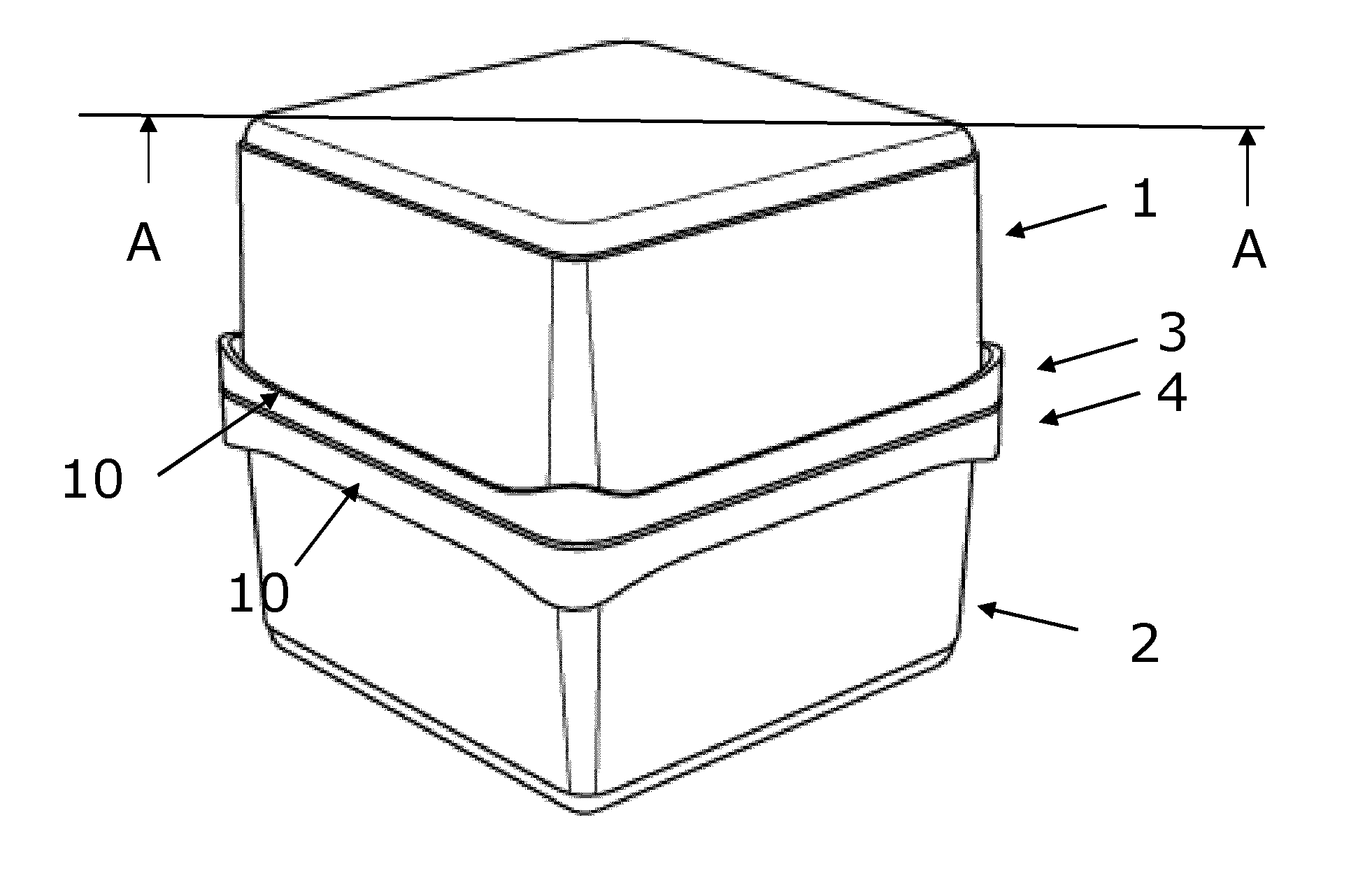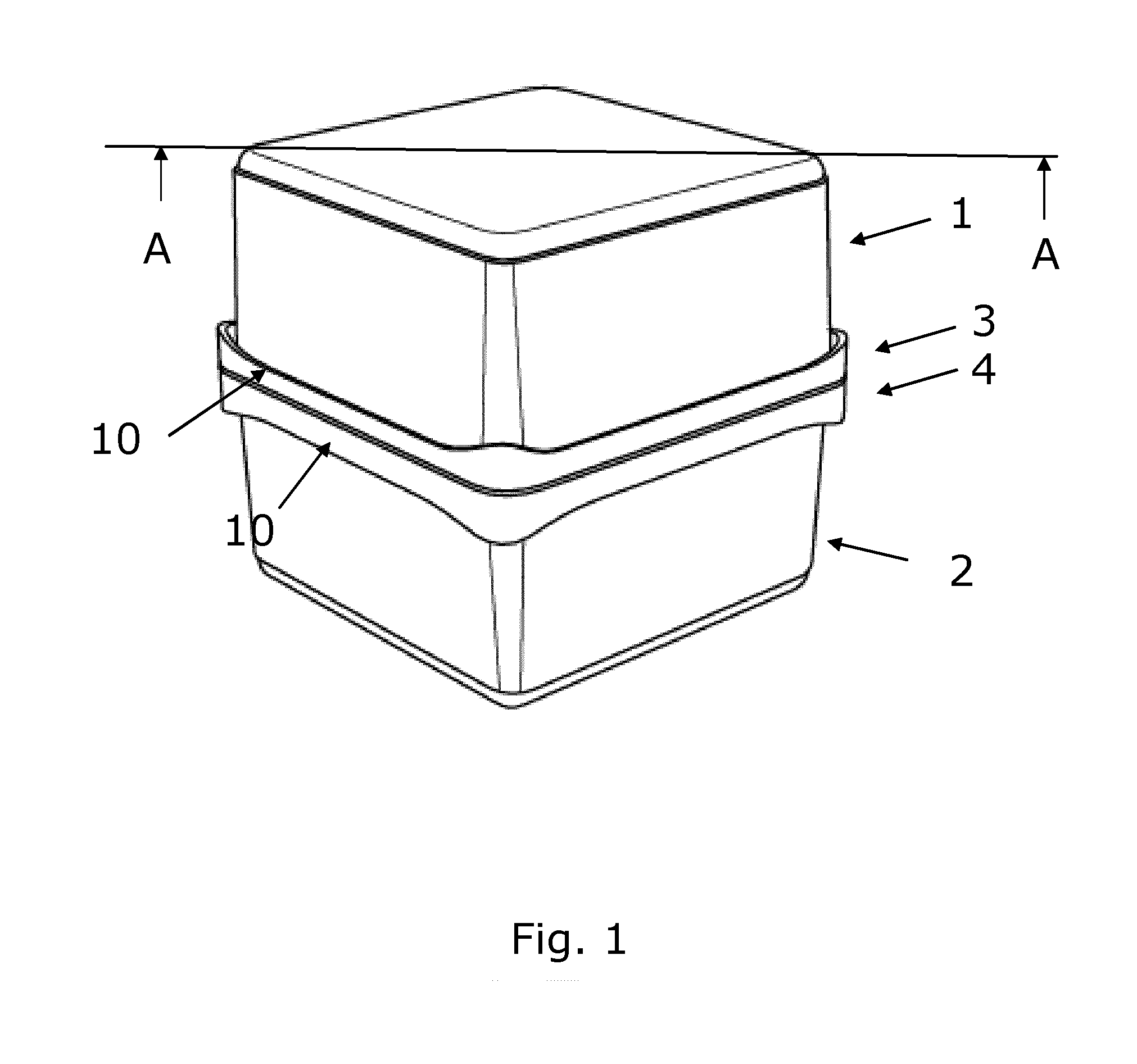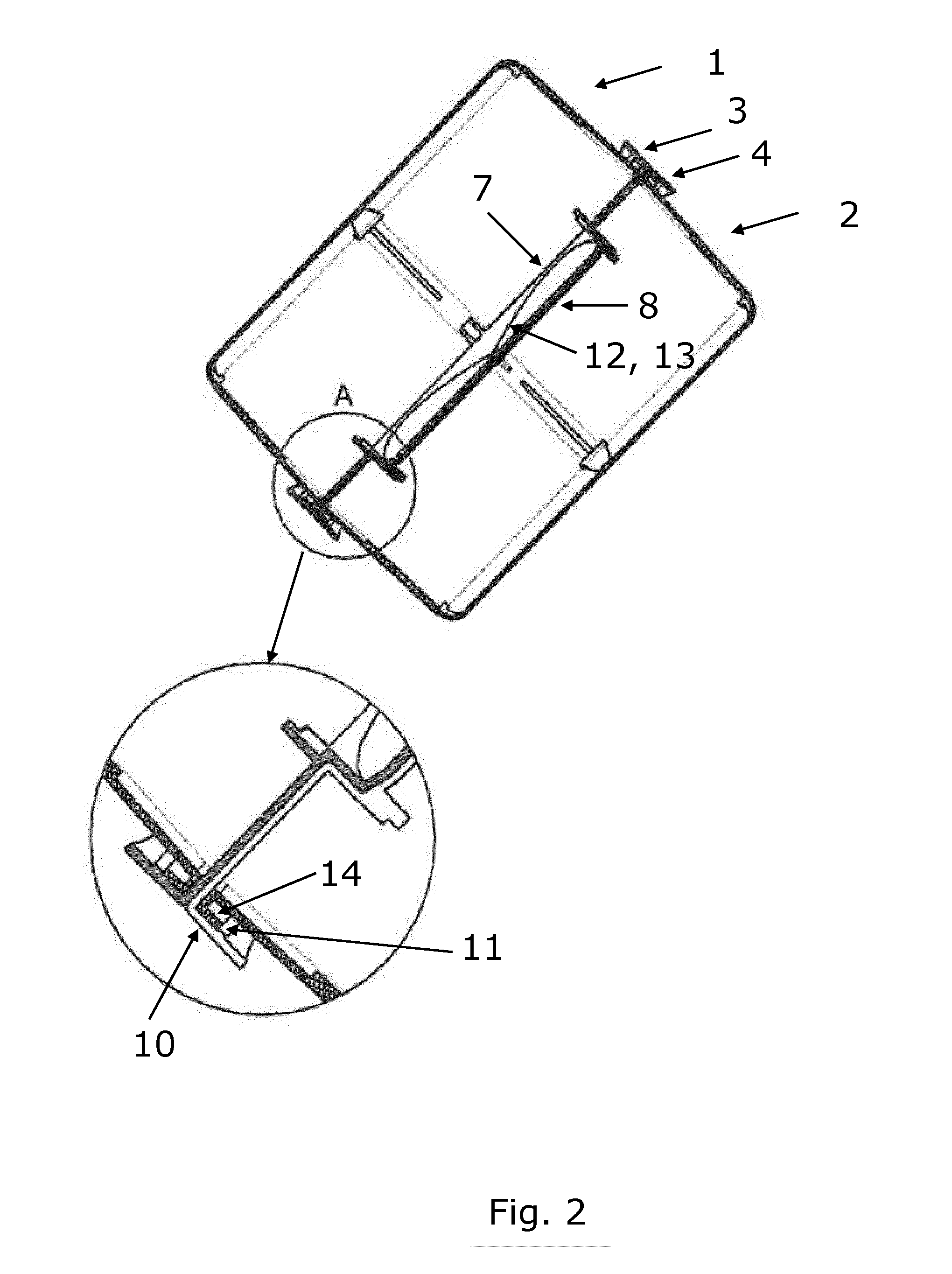Packaging split in parts
a technology of parts and packaging, applied in the field of packaging, can solve the problems of preventing the multi-packing from being arranged in a single place, unable to keep the several units together, and the convenience of such a process is also limited, so as to achieve the effect of preserving the freshness, facilitating assembly and separation, and preserving stability and freshness
- Summary
- Abstract
- Description
- Claims
- Application Information
AI Technical Summary
Benefits of technology
Problems solved by technology
Method used
Image
Examples
Embodiment Construction
[0033]Reference is made to FIG. 1 which shows schematically and in a 3-dimensional view a packaging according the present invention. The packaging comprises two containers 1, 2 each having an open end (not shown in the figures as the lids are covering the openings). The container of FIG. 1 is shown in an assembled state which will be elucidated further below. The two lids are formed each as a male lid 3 and a female lid 4 (see e.g. FIG. 3) which refers to the fact that the male lid 3 has a part fitting into female lid 4. As ordinary, each lid 3, 4 has a topside and a underside where the underside is the side facing towards the innerside of the container to which is applied and the topside is the reverse side. Each of the lids is adapted to close the open end of a container 1, 2. Typically, the lids are adapted to close the container in a firm fit in manner which mechanically closes the container so that liquids or powdery substances stored in the container are not leaking out. The a...
PUM
 Login to View More
Login to View More Abstract
Description
Claims
Application Information
 Login to View More
Login to View More - R&D
- Intellectual Property
- Life Sciences
- Materials
- Tech Scout
- Unparalleled Data Quality
- Higher Quality Content
- 60% Fewer Hallucinations
Browse by: Latest US Patents, China's latest patents, Technical Efficacy Thesaurus, Application Domain, Technology Topic, Popular Technical Reports.
© 2025 PatSnap. All rights reserved.Legal|Privacy policy|Modern Slavery Act Transparency Statement|Sitemap|About US| Contact US: help@patsnap.com



